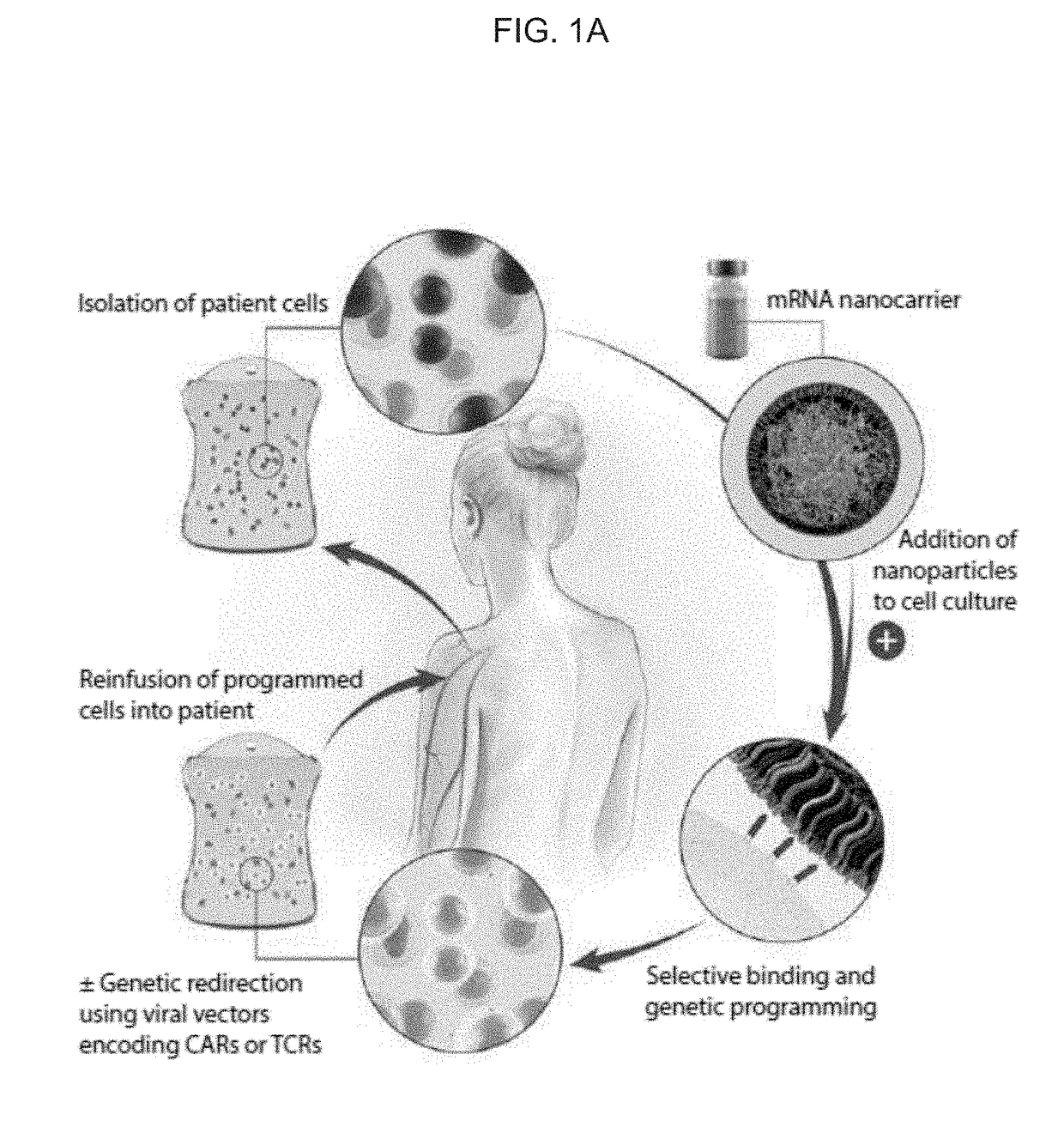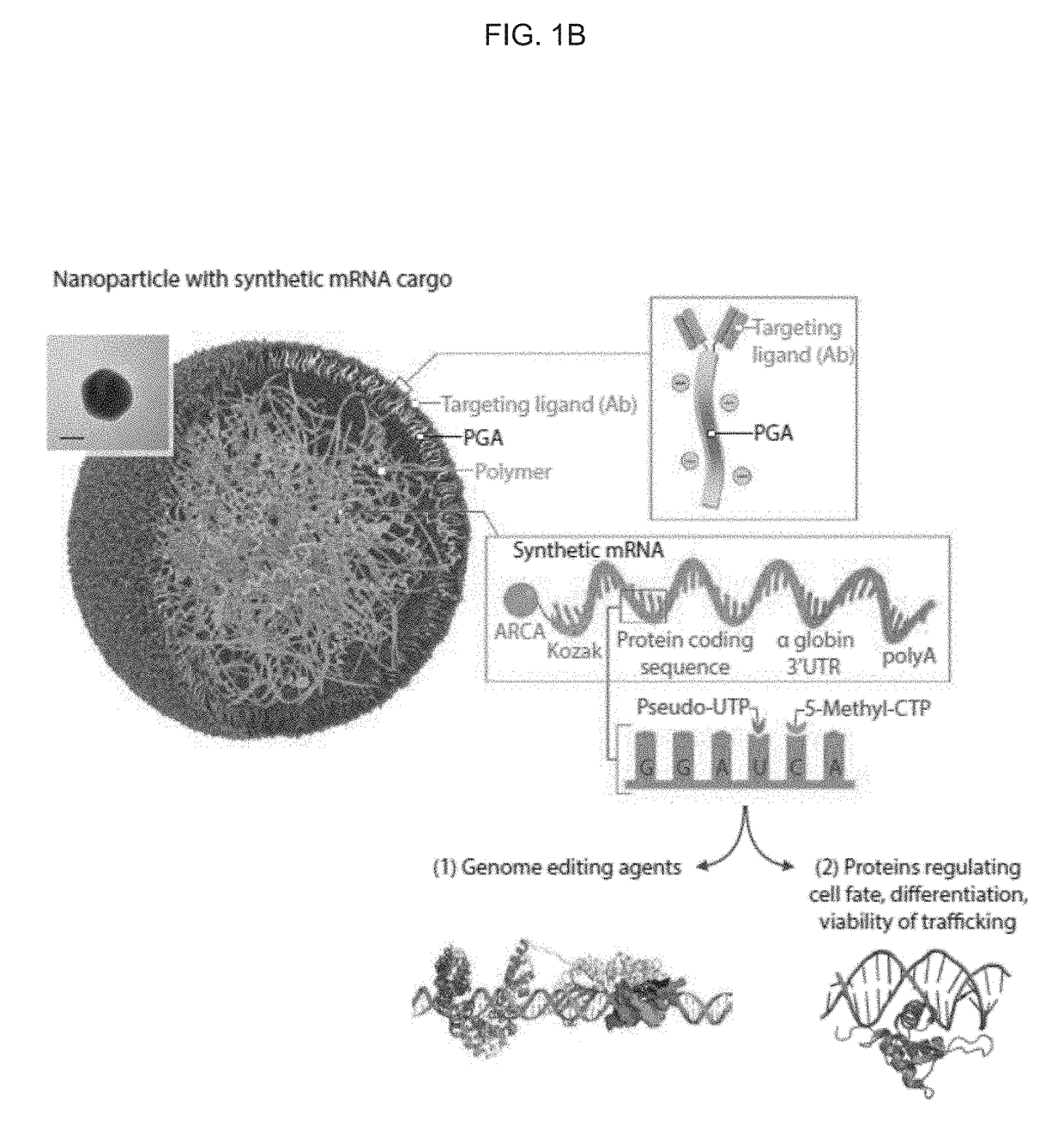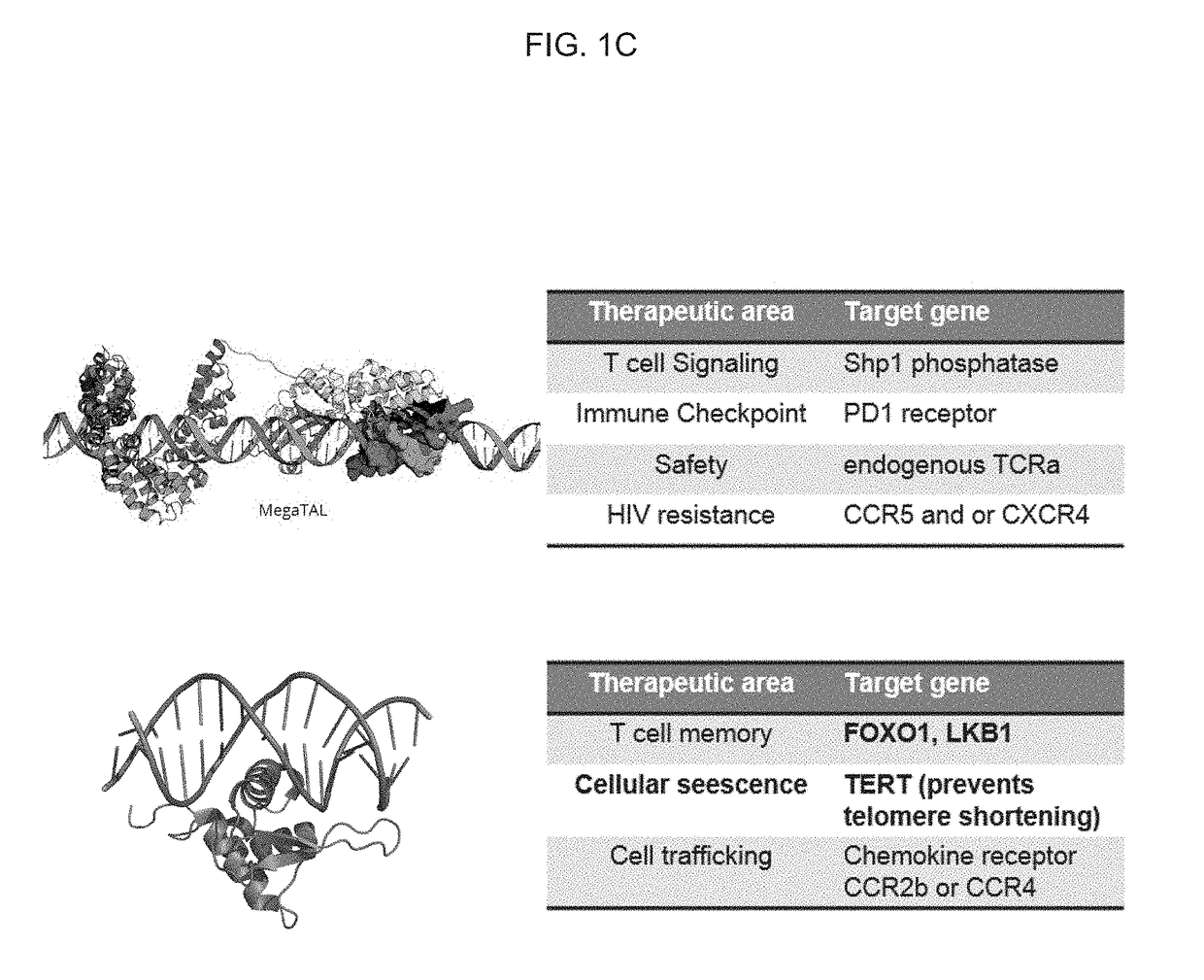Compositions and methods to program therapeutic cells using targeted nucleic acid nanocarriers
a nucleic acid nanocarrier and therapeutic cell technology, applied in the direction of antibody medical ingredients, active genetic ingredients, genetic material ingredients, etc., can solve the problems of compromising the viability of cells, reducing and reducing the expression of continued therapeutic proteins over time, so as to reduce cell senescence, boost the ability to present antigens, and increase the potency of vaccines
- Summary
- Abstract
- Description
- Claims
- Application Information
AI Technical Summary
Benefits of technology
Problems solved by technology
Method used
Image
Examples
example 1
[0365]Introduction. Directing immune responses toward cancer by genetically engineering T cells to express chimeric antigen receptors (CARs) or T cell receptors (TCRs) is a therapy that is beginning to yield significant results, and important clinical trials are on the horizon. The process of bioengineering T cells into ‘living drugs’ that can increase in number, serially destroy tumor cells, and ultimately differentiate into long-lived memory T cells requires stable integration of receptor transgenes into the lymphocyte's genome. Despite the time and cost required for their production, as well as restrictions on the size and number of genes that they can package, viral vectors are currently the most effective means to program these cells with tumor-recognizing capabilities for applications (Zhang et al., Nat Commun 6, 7639 (2015); Cribbs et al., BMC Biotechnol 13, 98 (2013)).
[0366]Aside from these chronic gene expression systems, it is also possible to induce phenotypic changes in ...
PUM
| Property | Measurement | Unit |
|---|---|---|
| pH | aaaaa | aaaaa |
| temperatures | aaaaa | aaaaa |
| temperatures | aaaaa | aaaaa |
Abstract
Description
Claims
Application Information
 Login to View More
Login to View More - R&D
- Intellectual Property
- Life Sciences
- Materials
- Tech Scout
- Unparalleled Data Quality
- Higher Quality Content
- 60% Fewer Hallucinations
Browse by: Latest US Patents, China's latest patents, Technical Efficacy Thesaurus, Application Domain, Technology Topic, Popular Technical Reports.
© 2025 PatSnap. All rights reserved.Legal|Privacy policy|Modern Slavery Act Transparency Statement|Sitemap|About US| Contact US: help@patsnap.com



